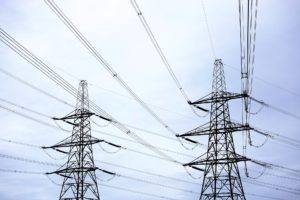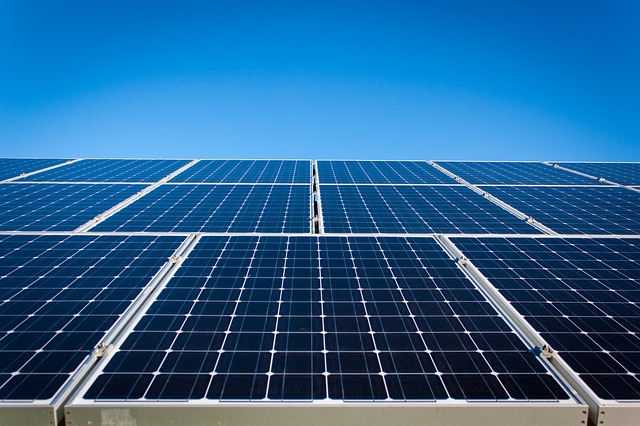We may earn money or products from the companies or products mentioned or linked to in this post.
Last week we talked about Solar power and mentioned this will be a 4 part series. If you haven’t read the first part, here is a link to Alternative power for the home – 4 Part series.

After you have determined how much power you will need, you will then need to determine where you will place your panel’s. You will have to do some thinking on this, because if you put them in a place that doesn’t get the most amount of sunlight, then you will be cutting your power dramatically. You might think that putting them on your roof would be best, but you will have to
get the roof re shingled, you might also run into the issue that your roof can not support the weight of the system. If you have decided that you want to do your own system, then I hope this guide on how to build your own solar power system will help you determine what it best for you.
I would suggest you find a clearing close to the house that will provide ample sunlight throughout the day, you will need to design a system that will allow you to change the angle of the Solar panel’s. Once you have that all thought out and you know where you are going to place your Solar array,
then you can start to look at how you want your system set up.
What type of Solar Panel’s should I get?
You have three type’s of Solar Panels to choose from; Monocrystalline, Polycrystalline and Thin Film.
Although the Monocrystalline Panels may cost more, they are much more efficient as far as converting the power from the sun into electricity. This has been on the market the longest so that has allowed for plenty of time for improvement’s. You can save on space with these since they are the most efficient.
With the Polycrystalline, the panels are cheaper, but they also lack on the amount of sunlight they can convert over to energy. This technology is newer than the Mono. With the lacking ability to convert as much sunlight into energy as the Mono Panels, you will need to use up more space in order to achieve the desired amount of output energy.
The Thin film is completely different, it is the newest of the three. They do fair more better than the other two as far as beating the heat, they can be flexible as well. They are much more cheaper, but require more space to get the same amount of output that you can get with the Mono panels.
All in all, they all have their up’s and down’s, so you would need to determine which kind would work best for your situation. Remember, placement of your panels means everything. You have to angle it just right to be able to get the most amount of efficiency as possible. Each panel will have a label stating how much energy can be converted over at its peak, not all panel’s will produce the same amount of output.
How should I wire my system?
This can be a bit tricky, If your panels are quite a distance away from your battery bank, then you can lose valuable amounts of energy due to resistance, but if you have it all fairly close together then you will be in better shape. The thicker gauge wire will provide the least amount of resistance, but it is much more expensive. That is where it gets tricky, finding the best place to mount
the solar panels that is in your budget.

If you hook your panels up parallel the voltage would stay the same, but you would add the amps together. If you run it in series you add the voltage together, but the amps stay the same. Either way, you still come out with the same amount of watts, but you will have a difference between the volts and amps.
In order to charge you batteries, you need at least 14.4 volts to charge the batteries in a 12v system, So you will need to have 18.9V panel’s as well as making sure you don’t lose too much volt’s from resistance between your panels and charge controller to make sure the your batteries will actually get a charge. Remember, the panels aren’t producing the full amount of voltage unless they are under full sun (the Peak). Different gauge wires can transfer different amounts of power through the line. You will need to factor all of this in, otherwise you can find yourself in a pickle.
Remember, you have the Solar panels, the charge controller, the battery bank and the inverter. You will need all of this in order to complete the system. Make sure you ground out your system.
What kind of inverter should I get?
Make sure it meets the UL 1741 standards. The size of inverter will ultimately depend on how much juice you plan on using at any given time, the higher output the better, but that can be expensive. So if you do not need to use a lot of electricity, then a smaller inverter would work, as long as you make sure it is big enough for your peak time usage. The best kind of inverter to get would be a Pure Sine Wave.
What type of battery is best for storing power?
The best type of battery for solar power storage would be Golf Cart Batteries. Do not use batteries that you take out of your old vehicle’s. Yes, you can use them, they will work, but not for long, they are not meant for the constant drain and recharging of the system.
Make sure you store your batteries in a non conductive box, like a plywood crate that you can build. You will want to make sure you follow all the safety tips, so you don’t burn your house down. It can happen. So please, be sure to have fuses that will blow before something malfunctions. MAKE SURE YOU GROUND YOUR SYSTEM!
Next week I will be talking about how to generate your own wind power. Also, dont forget to check out my product review for my Ozark Trail 35L Choteau Daypack Backpack.

